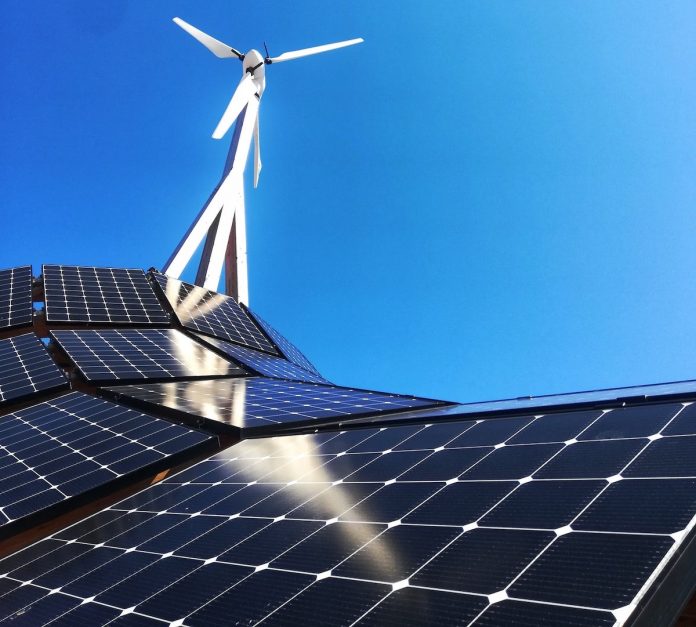6 Tips for Homeowners to Transition to a Net-Zero Lifestyle
As the name suggests, a net-zero home produces as much energy as it consumes. There are myriad benefits to a net-zero lifestyle, such as reduced carbon footprint, long-term savings on energy bills, increased property value, and house resilience. Read on for our list of 6 tips for homeowners to transition to a net-zero lifestyle!
You’ll need to plan carefully and get some expert advice to achieve your goal of balancing your energy consumption and production. However, the affordable, comfortable, healthy, and sustainable benefits outweigh the input required.
1. Gain Knowledge
Before you launch into anything, ensure you have all the necessary information about your home’s current energy efficiency and your area’s unique climate.
You can perform a home energy audit to assess your home’s insulation and energy efficiency or hire a qualified energy auditor to conduct an accurate evaluation for you. These professionals will look for energy loss points such as inadequately insulated attics, leaky windows and doors, inefficient appliances, and ineffective heating and cooling systems.
Then you’ll know exactly where to start when you begin your transition to a net-zero lifestyle.
Work with your home’s unique climate conditions. Consider temperature, humidity, precipitation, wind, cloud cover, solar energy potential, soil, hydrogeology, ecology, and biodiversity. Consult architects and builders who specialize in net-zero homes to get more info about how to best go about your venture.

2. Invest in Renewable Energy Sources
You’ll need safe, dependable power sources to power your home and reduce your reliance on traditional energy sources, such as fossil fuels.
Solar energy and wind energy are ideal renewable energy sources that can lessen your house’s carbon footprint. These options can supply power for you for many years to come if you understand your solar system’s efficiency, and invest in proper installation and upkeep.
They can power your appliances, lighting, heating, and cooling systems.
Install PC (photovoltaic) or solar panels on your rooftop or in your yard. Solar panels use sunlight to generate electricity, so make sure you install your panels in a place that’ll get optimal sun exposure.
Wind turbines use the wind’s energy to turn an electricity-producing generator. Naturally, wind energy will only work if you live in a location with reliable wind.
3. Ventilation Station
Adequate ventilation is essential to maintaining healthy indoor air quality.
Fresh air needs to be circulated to aid in the removal of pollutants, as well as to avoid contaminants like carbon monoxide and volatile organic compounds building up in your home. These contaminants pose health risks and reduce a home’s sustainability.
Additionally, adequate ventilation is the first step to controlling humidity and temperature within your net-zero home. Better airflow leads to less energy needed for heating and cooling systems.
Consider the installation of demand-control ventilation and heat-recovery ventilation to maintain your home’s energy efficiency while still having healthy airflow.
4. Heating and Cooling
Once your ventilation is sorted, we recommend you focus your attention on insulation, heating, and cooling. These systems tend to take up the most power.
Insulate the entire shell of your home to create a thermal envelope, maintaining a consistent temperature in your home and reducing energy costs. Consider using environmentally friendly hemp, cork, straw, recycled materials, or eco-friendly spray foam.
Keep warm with solar thermal systems or a boiler that burns biomass to low carbon gases (e.g. hydrogen). A hybrid water heater or heat pump leverages the latent heat in the surrounding air, soil, or nearby water source to heat your water.
Go simple for your net-zero lifestyle cooling solutions with strategically designed and placed overhangs and shading skylights.

5. Choose Energy-Efficient Appliances and Lighting
The next task on your list to homeowners transition to a net-zero lifestyle should be to choose energy-efficient appliances for your home.
Look carefully at the various labels to make sure you purchase the appliances with the highest Energy Star ratings. The higher the rating, the better the appliance will be at minimizing energy consumption.
Consider size, price, energy-saving settings, and other specifications before buying to ensure the energy efficiency of each appliance is top-notch.
LED lighting is a great option for a net-zero lifestyle transition since LED provides high-quality illumination with minimal power consumption.
6. Automate with Smart Home Technology
Another way to significantly reduce your home’s carbon footprint, minimize energy wastage, and reduce utility bills is to automate certain systems with smart home technology. Systems you can automate include lights and thermostats.
Smart home technology uses artificial intelligence to monitor and provide instantaneous data on your home’s energy use. This data will allow you to pinpoint areas where you can cut back on your usage.
Adjust the settings according to your preferences, schedules, and the real-time data the smart technology provides. Use this information to automate when your lights turn off and on, and when the thermostat should change, and you’re well on your way to a sustainable net-zero lifestyle!





